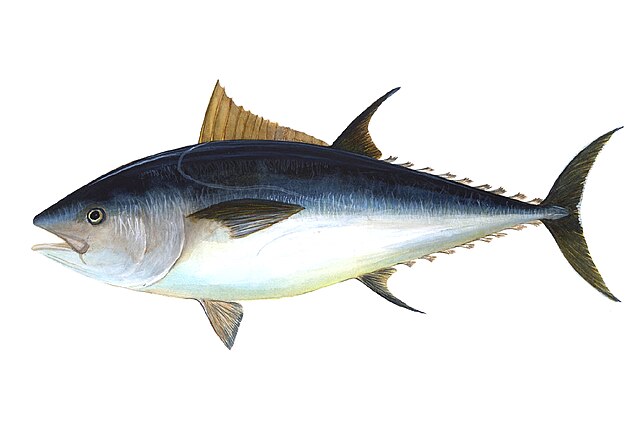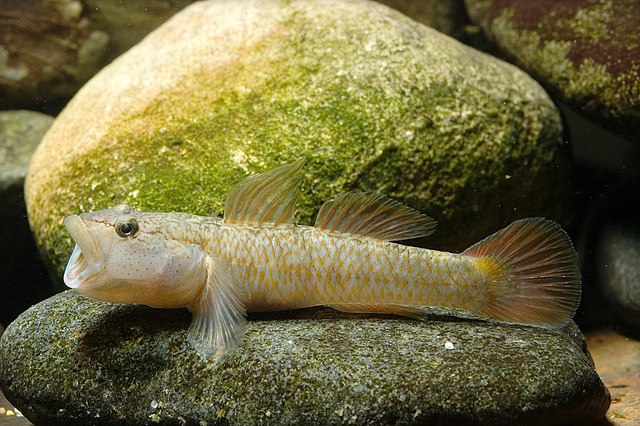Pelagic fish live in the pelagic zone of ocean or lake waters—being neither close to the bottom nor near the shore—in contrast with demersal fish that live on or near the bottom, and reef fish that are associated with coral reefs.
A school of large pelagic predator fish (bluefin trevally) sizing up a school of small pelagic prey fish (anchovies)
Large epipelagic predator fish, such as this Atlantic bluefin tuna, have a deeply forked tail and a smooth body shaped like a spindle tapered at both ends and countershaded with silvery colours.
Drifting Sargassum seaweed provides food and shelter for small epipelagic fish. The small round spheres are floats filled with carbon dioxide which provide buoyancy to the algae.
Great barracuda accompanied by a school of jacks
Demersal fish, also known as groundfish, live and feed on or near the bottom of seas or lakes. They occupy the sea floors and lake beds, which usually consist of mud, sand, gravel or rocks. In coastal waters, they are found on or near the continental shelf, and in deep waters, they are found on or near the continental slope or along the continental rise. They are not generally found in the deepest waters, such as abyssal depths or on the abyssal plain, but they can be found around seamounts and islands. The word demersal comes from the Latin demergere, which means to sink.
Bluespotted ribbontail ray resting on the seafloor
Rhinogobius flumineus swim on the beds of rivers
Benthic flatfish and benthopelagic cod on a shore – Jan van Kessel senior, 1626–1679
Flounder have both eyes on one side of their head








